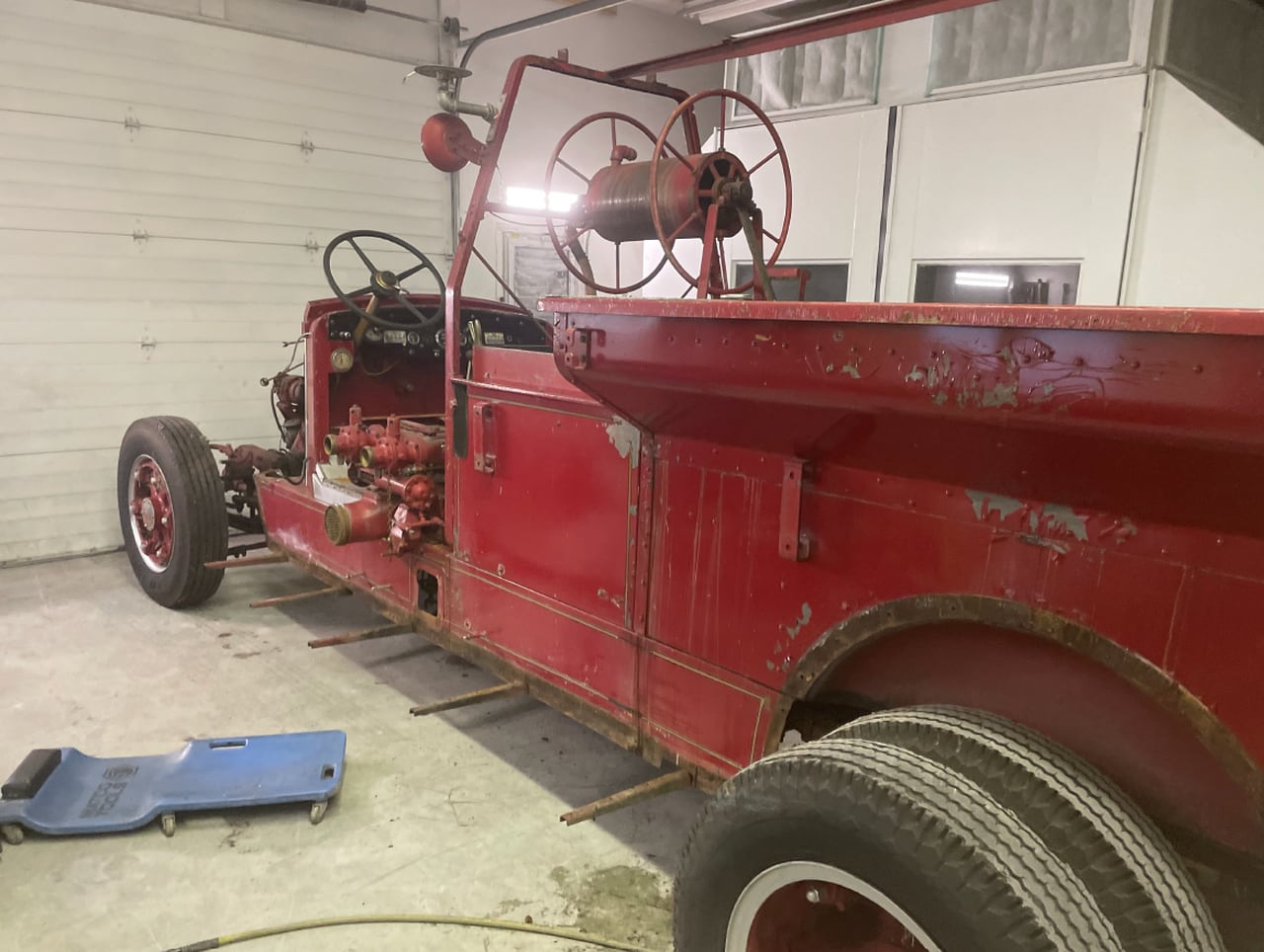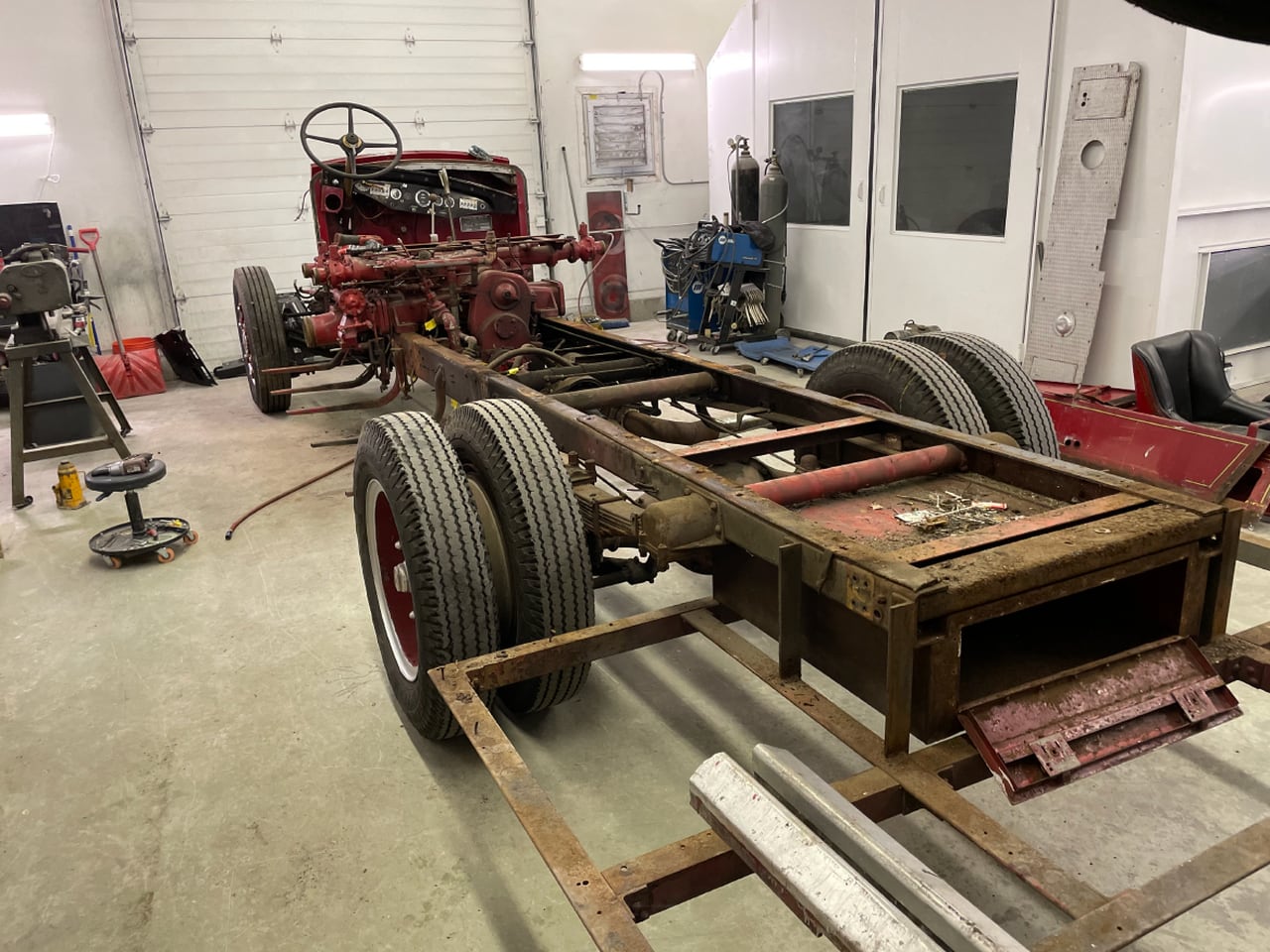HOLYOKE — In a report that is nearly a century old, Holyoke fire commissioners informed the mayor and aldermen in 1935 that the Fire Department had purchased a new Mack Truck — Engine 9. After responding to hundreds of alarms and driving thousands of miles over the years, the pumper is being restored to mint condition and will serve as an emblem of the city’s firefighting history.
Fire departments across the country were transitioning from the horse and buggy and steam engines to gasoline-powered trucks in the 1930s. This flashy equipment featured only what was considered bare basics back then. Holyoke’s new Mack was equipped with only water and ladders. Firefighters stood on running boards outside the vehicle and held on tightly as the truck sped to fire scenes.
Safety regulations now mandate firefighters sit inside, strapped in by seatbelts.

Engine 9 remained active for 15 years and then began serving as a reserve vehicle in 1950 — used only if another truck was out of service. The truck is being restored to its former glory, paid for a nearly $140,000 grant from the Community Preservation Act Committee.Submitted photo
Engine 9 remained active for 15 years and then began serving as a reserve vehicle in 1950 — used only if another truck was out of service. The truck is being restored to its former glory, paid for a nearly $140,000 grant from the Community Preservation Act Committee. With approval from the mayor and City Council, the committee uses a locally approved property tax surcharge to support the restoration of buildings and equipment deemed of historic value to the city.
“The restoration is bumper to bumper,” Deputy Chief Tom Shea told The Republican. The body will be sandblasted, primed and painted. There will be new gold leaf lettering. The side running boards, rear hose bed and other equipment will be restored to like-new condition. There also will be new wiring and upholstery.
The Fire Department’s mechanic told the chief not to spend a dime on the engine, because it was well-maintained and in perfect condition.
Shea has led the restoration effort, securing funding and directing the project.

Engine 9 remained active for 15 years and then began serving as a reserve vehicle in 1950 — used only if another truck was out of service. The truck is being restored to its former glory, paid for a nearly $140,000 grant from the Community Preservation Act Committee.Submitted photo
“It feels fantastic. I can’t wait for it to be finished. This is a fabulous piece of history. We’re going to drive it around at parades and different events. If we didn’t do this restoration, the truck probably would have ended up in a junkyard.”
According to historical records, including the fire commissioners’ report reviewed by The Republican, there were 740 fire alarms in 1935, resulting in about $110,000 in damage. Accounting for inflation, that would be $2.4 million today.
Holyoke had 195 structure fires, causing $1.4 million in property damage in 2023, twice the damage listed in the commissioner’s annual report. There were three fire fatalities in 1935 — there was one last year.
“Citizens back then didn’t have smoke detectors, and houses weren’t wired properly the way they are now. We have fire education programs and standards to protect us,” said Penni Martorell, Holyoke’s historian and curator.
In his 32 years on the force, Shea has been on many rescue missions. Saving the Mack is his latest.
“The paint was worn down to the bare metal, which was rusty. We’ve really got something here. It’s a fabulous piece of history that started out in Holyoke and is ending here,” he said.
Meg Magrath is chair of the preservation committee and recommended the City Council approve funding for the restoration.
“The folks who remember that truck being in service for fire suppression, that generation is passing. It is a way to hold on to something that helps us to remember the history of the city — to engender civic pride. There’s joy in being able to hold on to historic artifacts.”
While the 89-year-old pumper had little more than basic equipment, today’s trucks are driven by computer technology and safety features unheard of nine decades ago.
“Trucks have taken a complete 180. They were basic back then, just enough to get you to the fire, put it out and go home,” said Shea.
Newer vehicles feature systems that control emissions, speed resistors that slow the vehicle by enhancing brake performance, alarms warning when the truck is backing up, and signals indicating if a door is open or if a firefighter has not secured their seatbelt.
There’s also no more shifting into drive and reverse. Drivers do that by pushing buttons today. Modern trucks use energy transferred from the engine to pump water onto fires. That was done manually in 1935.
“People forget what life was like years ago,” said Martorell. “It’s nice to have shiny new equipment, but it’s also good to remember what your predecessors had to work with.”
Shea said restoration work, being done by a company in Westfield, is almost complete. It’s a dream come true.
“It’s a stressful dream, because I’m not a paperwork or computer guy. I needed a lot of help with that,” he laughs. “I can’t wait until it’s done.”
The goal was to showcase Engine 9 in the Holyoke St. Patrick’s parade. While that is unlikely because renovation is still going on, the pumper is expected to begin answering calls once again this summer from people wanting a peek into the history of firefighting in Holyoke.
“We live in a community that is very special,” said Martorell. “Holyoke people love the city’s history.”





